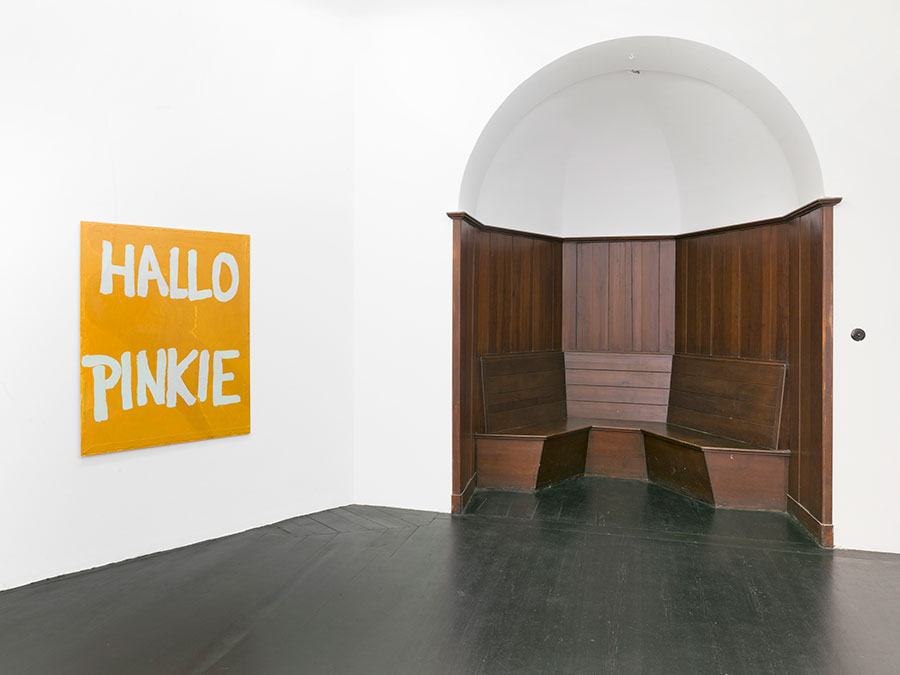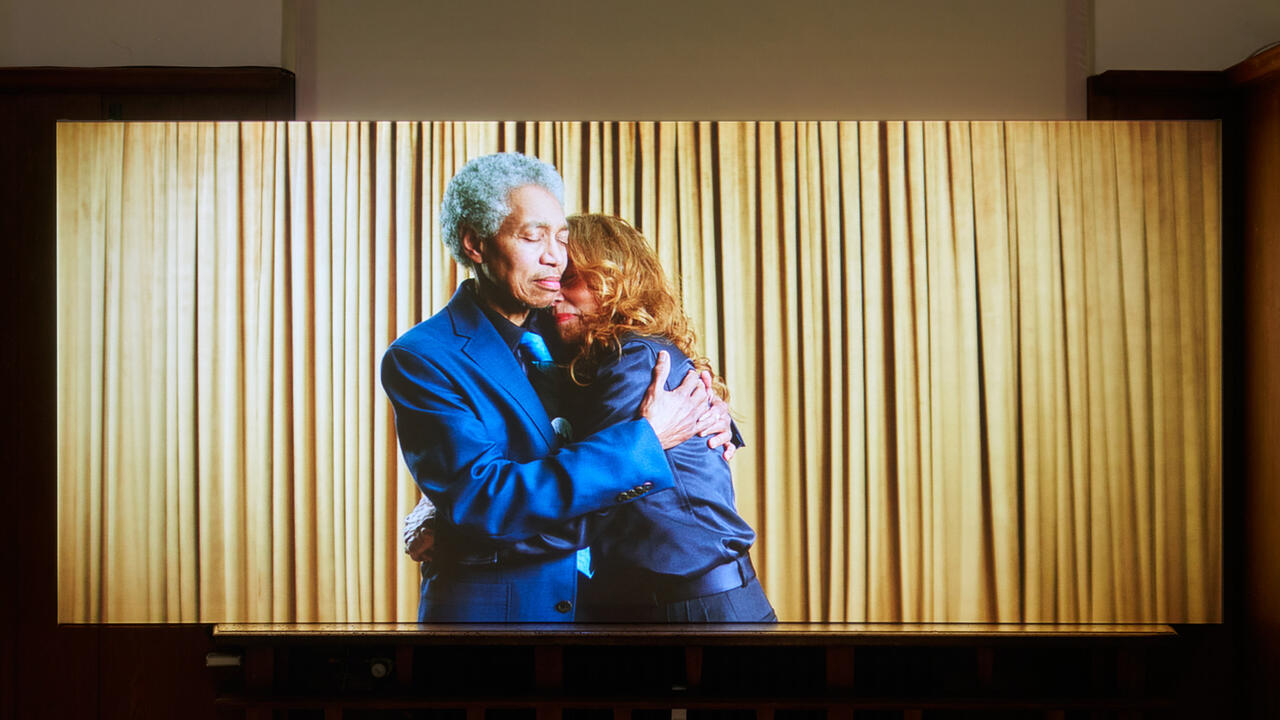The Teeming Symbols and References in Michaela Eichwald's Paintings
An exhibition across both Galerie Isabella Bortolozzi and Eden Eden, Berlin, shows how the artist leans into the history of painting
An exhibition across both Galerie Isabella Bortolozzi and Eden Eden, Berlin, shows how the artist leans into the history of painting

Why might it still be worthwhile for artists to transfix us between an artwork’s materiality and the many elusive meanings suggested by its symbols? In lieu of an easy answer, there’s that illuminating feeling of registering the simultaneity of verifiable things and the hidden content that swirls beneath. If this is a common ambition of painting, it’s rarely fulfilled to the degree achieved in Michaela Eichwald’s exhibition, ‘IST DOCH KEIN ZUSTAND’ (It Is No Condition), at Berlin’s Galerie Isabella Bortolozzi and its adjunct space, Eden Eden.
By way of teeming art-historical referents, Eichwald lulls us into a familiar space – much easier, here, for the paintings to do their strange-making work. Du soltalleine stan und soltzunieman gan (You Should Stand Alone and Should Not Go to Anybody, 2018) and Die Hirnis kommen (The Brainies Are Coming, 2018) seem to have imbibed Jean Dubuffet’s art-brut figures and the thick blobs central to Jean Fautrier’s Tachist abstractions. In the middle of Eichwald’s canvases, nearly formless protagonists float like the arcane symbols associated with dream interpretation. The former work features a cloud of organ-esque copper blotches and turquoise pools, mixed with ochre patches and four toothy shapes. Their collective mass is overlaid with a kind of black jellyfish hieroglyph. The latter painting houses two freakishly scrawled faces, which are bordered by ribboning entrails of pink and crimson. Jottings hover, in one case forming an amorphous outline resembling a melting chicken.

These are generous pictures, but their immanent affect is dulled by a conspicuous debt to art history. Beyond Dubuffet and Fautrier, I cycled through thoughts of Arshile Gorky and Grace Hartigan. Reaching back further, a quickly jotted insect in Hierophant (2018) toggles between cave painting and bathroom graffiti, while the work’s title invokes a priestly tradition. It’s caustic, twitching energy that brings the paintings back to the present. Their materials comprise a vernacular of the everyday abject: the textured pleather that Eichwald uses as canvas; the hardware-store ephemera from which two sculptures are constructed. Die Rückkehr der Ritter-Brüder (The Return of the Knight Brothers, 2018) is made from two small sections of grey PVC plumbing tube, anthropomorphized with wig-like clumps of foam, spray-painted silver and set on a windowsill like a grotesque wall flower. Wuchtige Abschüsse von Brilliant-Bombetten, Knatter-Wolken und Palmstern-Bukutten (Powerful Shots of Brilliant Bombettes, Rattle Clouds and Palm Star Bouquets, 2018) is a party-refuse bouquet. A cube of expired fireworks tops a wooden pedestal, piled with faux feathers and berries spray-painted in maniacal colours.While these techniques buffer Eichwald from her from her historical referents, they too have has precedents: Isa Genzken’s roiling lexicon of all things fluorescent, drippy and cheap; Sigmar Polke’s alchemical resins; Julian Schnabel’s smashed-up plates. When Eichwald leans into painting’s oldness, she also enters the ideological murk of nostalgia. The work might even risk indulgence, were she not so good at catalysing thought – making work that quivers constantly between exigent materiality and looming signification.

Freie Bahn ins Glück (Clear Path to Happiness, 2018) calls up Gorky’s biomorphism, even as Eichwald’s choppy lines and shapes clash with his blending and modelling. Orange, greige, white and brown shapes are laid atop pebbled, golden pleather. The shapes’ associations rotate like an acid-trip carousel. One form resembles death-mottled arse-cheeks. But then, suddenly, the black line emitting upwards seems more stem than spine, re-casting the shape as a rotten apple. Soon, that line recedes, leaving us with humble offal. This shapeshifting quality summons a cliché of abstract painting: ‘You can see whatever you want!’ But while clichés are the graves of dead language, these paintings, which embed polymorphism into layers of nagging historical and material vibrancy, they’re alive.
Michaela Eichwald, ‘IST DOCH KEIN ZUSTAND’ runs at Galerie Isabella Bortolozzi and Eden Eden, Berlin, until 19 October 2018.
Main image: Michaela Eichwald, Freie Bahn ins Glück (Clear Path to Happiness) (detail), 2018, acrylic, oil, graphite and lacquer on pleather 1.4 × 2.9 m. Courtesy: the artist and Galerie Isabella Bortolozzi, Berlin; photograph: Roman März























